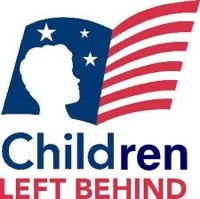The Riehl World: Time For Hybrid Model Schools?
by Richard J. Riehl on May 31, 2012
 No Child Left Behind and the rise of charter schools have been the primary drivers of school reform in the last decade. But while NCLB promised school accountability, it got it by labeling students and schools successes or failures based on test scores alone. It failed the promise implied by its title, to close the learning gap separating students by income and ethnicity.
No Child Left Behind and the rise of charter schools have been the primary drivers of school reform in the last decade. But while NCLB promised school accountability, it got it by labeling students and schools successes or failures based on test scores alone. It failed the promise implied by its title, to close the learning gap separating students by income and ethnicity.
California’s charter schools, on the other hand, freed of state bureaucracy and teachers unions, were meant to help left-behind students bloom by using innovative methods traditional schools could adopt. But with a few exceptions, North County charters have served mostly as havens for families not quite wealthy enough to afford private schools. Home schooling is a feature of the largest of them, a popular choice for those who’ve lost faith in traditional schools. Low income and single-parent families are left behind when parents are required to take the place of trained professionals.
Follow the jump for the rest of the story.Hard times are now delivering punishing blows to schools simply trying to survive as they are. The talk in Carlsbad is about how many days to furlough teachers to save money, shortchanging students in the bargain. If voters don’t approve a tax increase in November things will only get worse. And if that happens, the survival of schools may depend more on transformation than reformation.
Technology has transformed the business world, producing vastly improved customer service. Yet schools are still run like Henry Ford’s assembly line. Students are expected to move along at the same rate, learning the same things in the same way, with periodic quality assessments that don’t impede their progress.
The Capistrano Connections Academy in San Clemente gives us a glimpse of how technology can transform education. It delivers its classes online rather than in classrooms. A tuition-free, accredited public charter school authorized by the Capistrano School District, it enrolls more than 1,000 students from its surrounding counties, including San Diego. Teachers are professionally certified, and the school meets California’s academic achievement and accountability requirements. Its impressive array of technology, available to teachers, students and parents, allows for a highly customized delivery of course content and ongoing measurable student progress.
Unfortunately, the Academy’s student test scores are not especially impressive. Its 2011 Academic Performance Index (API) stands at 779, down 15 points from its 2010 results, so online education alone may not be the answer. But maybe it’s time for a hybrid model, involving online instruction for certain courses and allowing teachers to do what they do best—work with small groups of students to facilitate learning in teams. It won’t be cheaper, but if schools produce better results voters may be more willing to support them.
Contact Richard Riehl at riehlworld2@yahoo.com
The Riehl World: Time For Hybrid Model Schools?
by Richard J. Riehl on May 31, 2012
California’s charter schools, on the other hand, freed of state bureaucracy and teachers unions, were meant to help left-behind students bloom by using innovative methods traditional schools could adopt. But with a few exceptions, North County charters have served mostly as havens for families not quite wealthy enough to afford private schools. Home schooling is a feature of the largest of them, a popular choice for those who’ve lost faith in traditional schools. Low income and single-parent families are left behind when parents are required to take the place of trained professionals.
Follow the jump for the rest of the story.Hard times are now delivering punishing blows to schools simply trying to survive as they are. The talk in Carlsbad is about how many days to furlough teachers to save money, shortchanging students in the bargain. If voters don’t approve a tax increase in November things will only get worse. And if that happens, the survival of schools may depend more on transformation than reformation.
Technology has transformed the business world, producing vastly improved customer service. Yet schools are still run like Henry Ford’s assembly line. Students are expected to move along at the same rate, learning the same things in the same way, with periodic quality assessments that don’t impede their progress.
The Capistrano Connections Academy in San Clemente gives us a glimpse of how technology can transform education. It delivers its classes online rather than in classrooms. A tuition-free, accredited public charter school authorized by the Capistrano School District, it enrolls more than 1,000 students from its surrounding counties, including San Diego. Teachers are professionally certified, and the school meets California’s academic achievement and accountability requirements. Its impressive array of technology, available to teachers, students and parents, allows for a highly customized delivery of course content and ongoing measurable student progress.
Unfortunately, the Academy’s student test scores are not especially impressive. Its 2011 Academic Performance Index (API) stands at 779, down 15 points from its 2010 results, so online education alone may not be the answer. But maybe it’s time for a hybrid model, involving online instruction for certain courses and allowing teachers to do what they do best—work with small groups of students to facilitate learning in teams. It won’t be cheaper, but if schools produce better results voters may be more willing to support them.
Contact Richard Riehl at riehlworld2@yahoo.com